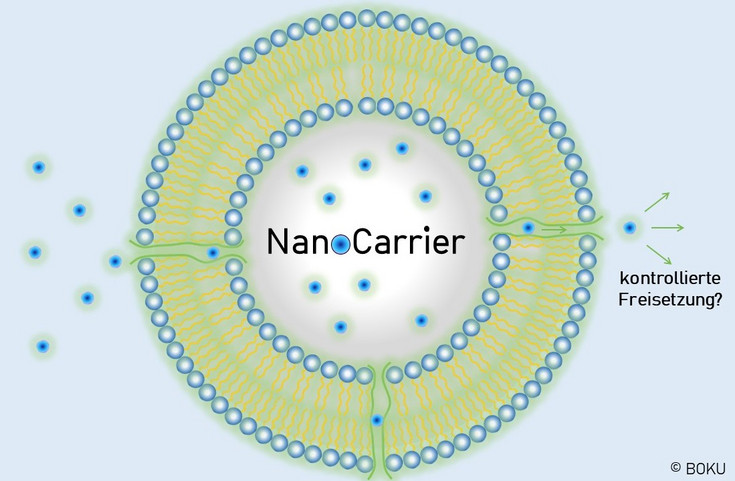Synthetic Bioweapons - Biosafety Assessment of the Convergence of Synthetic Biology with New/Innovative Technologies
The work is to contribute significantly to structuring the area of synthetic biology, which is still unclear with regard to its dual-use potential (in particular in interaction with the associated converging technologies) with the aid of a future-oriented risk analysis and assessment. Based on this, a scientifically sound prognosis of the corresponding biosafety risks is to be drawn up. In addition, this work is intended to lay the foundation for a continuation of such an analysis by operationalizing the procedure for analysis and assessment in the sense of a tool.
Duration: 01.11.2023 - 31.05.2025
Determining the environmental behaviour of NanoCarriers

Under the leadership of Dr. Bernd Giese, work began in September on the new project for the risk assessment of nanocarriers. The BOKU Institutes of Waste and Recycling Management and of Synthetic Bioarchitectures are also involved. Dr. Christina Hipfinger is responsible for the research work of the ISR. The three-year project is funded by the German Federal Environment Agency (UBA). During this time, the environmental risks of nanocarriers as the smallest synthetic carrier structures, which are mainly used in agriculture for pesticides and fertilizers and in medicine for the targeted administration of drugs, will be investigated. For particularly critical nanocarriers, test strategies are to be developed and implemented that enable an investigation of their environmental behavior and the possible release of the transported active ingredient under environmentally relevant conditions. In this way, the influence of the carriers on the change in the environmental behavior of active substances will be determined as an example and the implications for an appropriate evaluation of the environmental behavior in the context of risk assessment will be described in more detail. The results will help to adapt the guidelines for risk assessment of nanocarriers to the latest developments.
Duration: 01.09.2022-31.08.2025
Plastics fate and effects in the human body

The main goal of PlasticsFatE (Plastics Fate and Effects in the Human Body) is to improve our current understanding of the effects of micro- and nanoplastics and associated additives or adsorbed contaminants in the human body. Human exposure to micro- and nanoplastics may result from the widespread use of plastic products and their release into the environment, where they degrade into micro- and nanoplastic particles. Plastic particles also enter natural systems as secondary by-products, e.g. through tire wear or abrasion of textiles. As a result, these particles are found in soil, air, drinking water and food. Despite recent efforts to assess the extent of human risks associated with micro- and nanoplastics, our current knowledge is still insufficient.
In this project, data on exposure, fate and toxicity of micro- and nanoplastics in the human body will be collected. Consumer-, occupational- and environmental exposure data related to food, beverage, air and personal care products are being adapted and developed. The novel prospective risk assessment method developed by ISR will help to understand the human risks associated with micro- and nanoplastics and to identify them early in the product development process. For this purpose, a web-based decision support system for micro- and nanoplastics is being developed. It is intended to inform stakeholders (regulators, industries, consumers) and to support risk management (prevention, control, risk mitigation).
For more information, see: https://www.plasticsfate.eu/
Duration: 01.03.2023 - 31.03.2025
